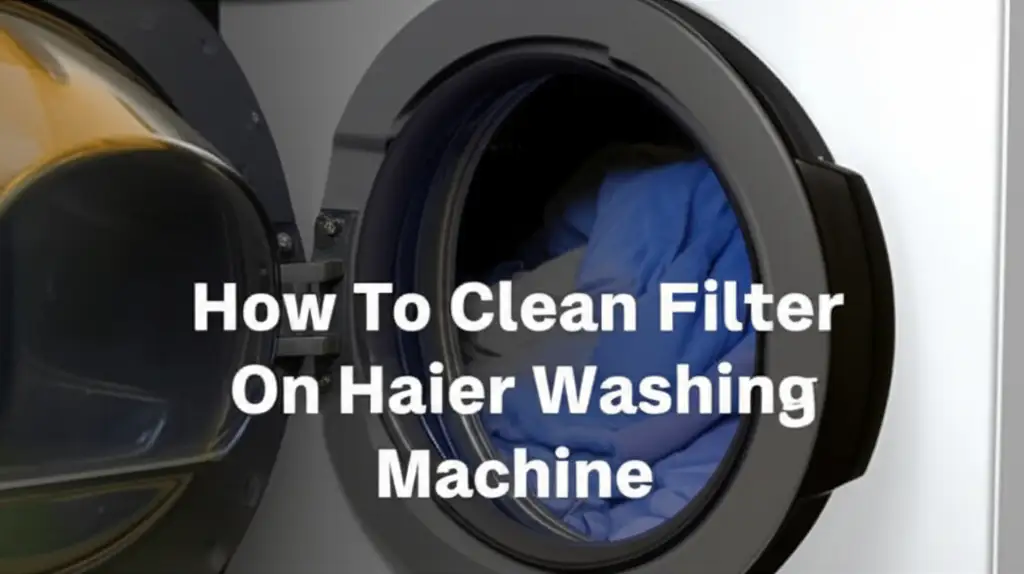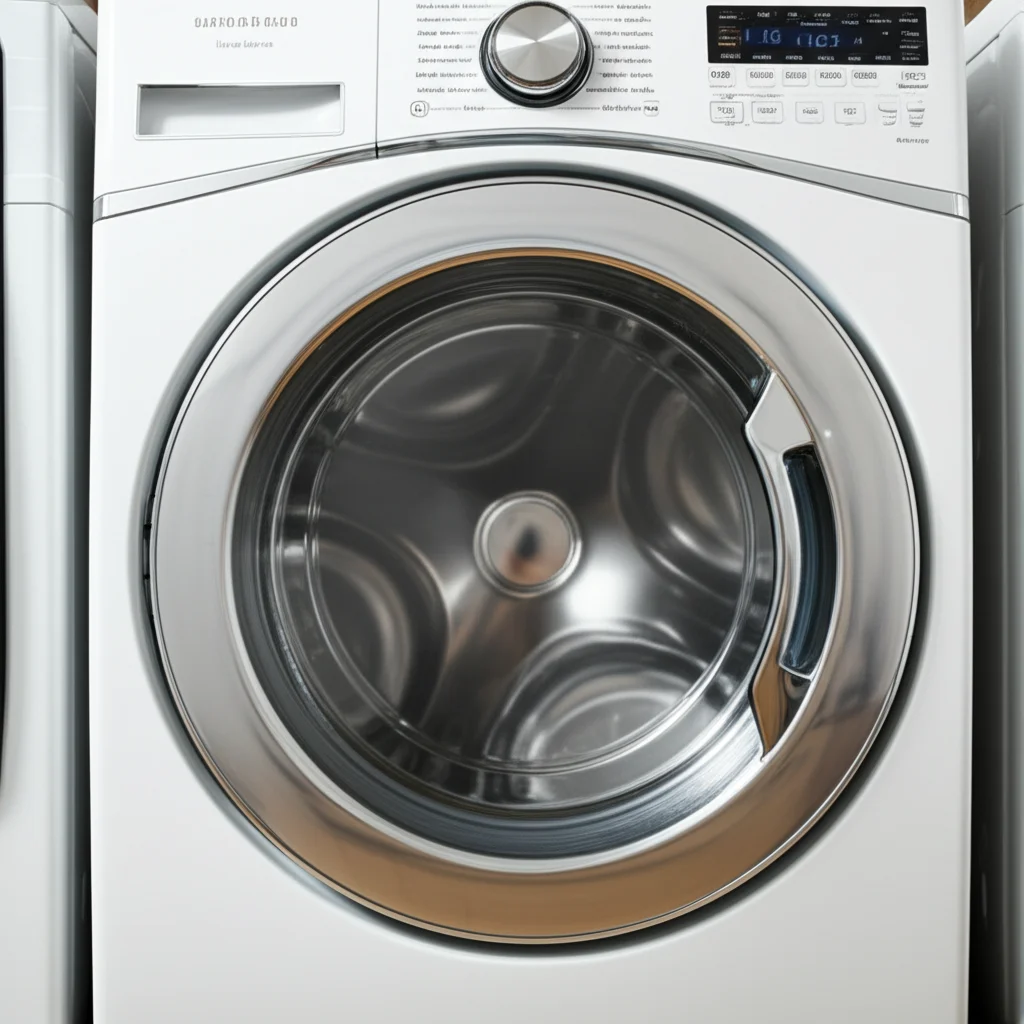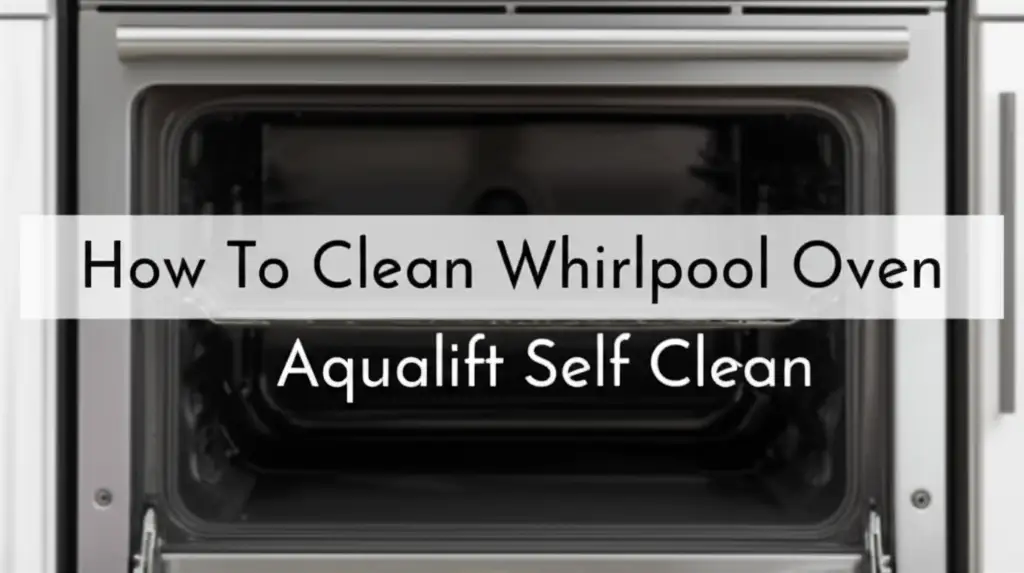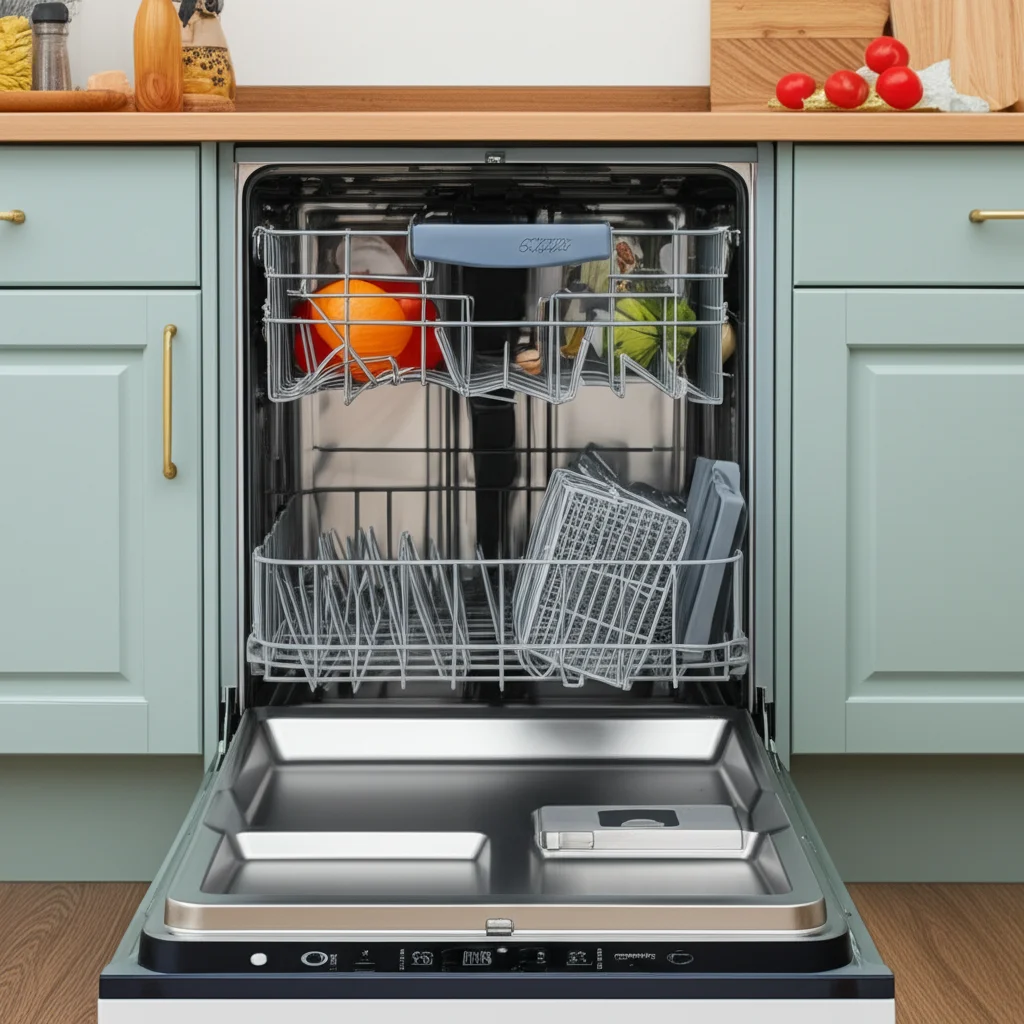· Todd Martin · Appliance Maintenance · 19 min read
How To Clean Filter On Haier Washing Machine

Unlock Peak Performance: How to Clean Your Haier Washing Machine Filter
Have you noticed your clothes not smelling as fresh after a wash? Perhaps your washing machine takes longer to drain, or it makes strange noises. These are common signs that your Haier washing machine filter needs attention. This small part plays a huge role in your machine’s health and cleaning efficiency.
Cleaning the filter on your Haier washing machine is a simple task that prevents bigger problems. It helps maintain optimal performance, ensures clean laundry, and extends the lifespan of your appliance. In this comprehensive guide, I will walk you through why filter cleaning is vital, where to find the filter, the tools you need, and a clear step-by-step process for both front-load and top-load Haier models. You will also learn about post-cleaning checks and how often you should perform this essential maintenance. Let’s make sure your laundry days are smooth and successful.
Takeaway
- Regularly clean your Haier washing machine filter to prevent drainage issues, odors, and machine malfunctions.
- Locate the drain pump filter, usually at the bottom front of your Haier washer.
- Always unplug the machine and drain residual water before opening the filter.
- Rinse the filter thoroughly under running water and remove all debris.
- Perform a test cycle after cleaning to check for leaks and proper function.
To clean the filter on your Haier washing machine, first unplug the appliance and drain any remaining water through the small hose near the filter cap. Then, unscrew the filter cap, remove accumulated lint, debris, and foreign objects. Rinse the filter thoroughly under warm water and reinsert it, ensuring it is tightly sealed before restarting the machine.
Why Cleaning Your Haier Washing Machine Filter Matters
The filter in your Haier washing machine acts as a crucial barrier. It catches lint, fabric fibers, small objects like coins or buttons, and other debris. This prevents them from entering the pump and drainage system. Think of it as your washing machine’s personal bodyguard, protecting its internal components.
When this filter becomes clogged, it cannot do its job properly. Water might drain slowly or not at all, leading to standing water in the drum. This standing water can cause unpleasant odors to develop inside the machine and transfer to your freshly washed clothes. A blocked filter also puts strain on the drain pump, which can shorten its lifespan. This might lead to costly repairs down the line. I always ensure my own washing machine filter is clear to avoid these issues. Keeping the drain pump filter clean is one of the easiest ways to ensure your machine runs smoothly and efficiently. Many common washing machine problems stem from a neglected filter. For a more general understanding of why cleaning this component is so important, you can learn how to clean washing machine filter effectively.
Regular cleaning helps your Haier washing machine maintain peak performance. It ensures efficient water drainage and prevents the buildup of residue that can affect wash quality. A clean filter also helps prevent error codes related to drainage problems. These errors often indicate that the machine is struggling to clear water. Ignoring the filter can also lead to your Haier washing machine making excessive noise during cycles, especially during the drain phase.
Identifying the Filter Location on Your Haier Washer
Finding the filter on your Haier washing machine is the first step. The location can vary slightly depending on whether you have a front-load or a top-load model. However, for most modern Haier washers, especially front-loaders, the drain pump filter is typically easy to access. I have found it usually sits at the very bottom front of the machine.
On front-load Haier washing machines, look for a small access panel or door. This panel is usually located on the bottom right or left corner of the front of the appliance. You might need to gently pry it open with a flat-head screwdriver or simply push a tab to release it. Behind this door, you will find the drain pump filter cap and often a small drain hose. This is where most of the action happens for lint and debris collection. Haier front-loaders are designed for easy access to this component, simplifying your maintenance routine. Understanding how to use a Haier washing machine front load can help you locate other important components as well.
For Haier top-load washing machines, the filter location can be a bit different. Some modern top-loaders also have a drain pump filter at the bottom front, similar to front-loaders. You would access it the same way. However, older Haier top-load models might have lint traps located near the top rim of the drum or integrated into the agitator (the central pole). If your top-loader doesn’t have a visible front panel filter, check your user manual for specific filter locations. In some cases, top-loaders might rely more on their self-cleaning mechanisms and tub cleaning cycles to manage lint. For models with lint traps, these are typically removable grates or mesh bags you can pull out and clean. Knowing how to use a Haier washing machine fully automatic can also provide clues about your specific model’s features and maintenance points. Always refer to your specific model’s manual for precise instructions.
Essential Tools and Safety Precautions for Filter Cleaning
Before you start cleaning your Haier washing machine filter, gathering the right tools and taking essential safety precautions is vital. This preparation ensures a smooth, safe, and effective cleaning process. I always make sure I have everything ready before I begin any appliance maintenance task. Being prepared helps avoid unexpected spills or complications.
First, let’s talk about safety. The most important step is to unplug your Haier washing machine from the power outlet. This eliminates any risk of electric shock. Never attempt to work on an appliance that is still connected to power. Next, be prepared for water. Even after a spin cycle, there will likely be residual water trapped in the filter housing and drain hose. Have several old towels or absorbent rags handy. A shallow pan or baking tray is also indispensable to catch any draining water. This prevents a messy spill on your laundry room floor. Wearing a pair of gloves is also a good idea. This protects your hands from dirty water and any sharp debris that might be caught in the filter.
For tools, you will need a few basic items. As mentioned, a shallow pan and towels are a must. A small brush, like an old toothbrush or a bottle brush, is excellent for scrubbing the filter and its housing clean. Sometimes, a flat-head screwdriver can be useful to gently pry open the access panel if it doesn’t have an obvious latch. Pliers might be needed if the filter cap is exceptionally tight, but typically, it can be unscrewed by hand. Lastly, have a waste bin nearby to dispose of the collected lint and debris. Having these simple tools at hand makes the cleaning process quick and efficient, helping you maintain your Haier washing machine effectively.
Step-by-Step Guide to Cleaning Your Haier Washing Machine Filter (Front-Load)
Cleaning the filter on your front-load Haier washing machine is a straightforward process. Follow these steps carefully to ensure a thorough and safe cleaning. I have done this many times, and it really makes a difference in how the machine performs.
- Disconnect Power: The very first and most important step is to unplug your Haier washing machine from the electrical outlet. This removes any risk of electric shock and is crucial for your safety. Always prioritize safety when working with appliances.
- Locate the Access Panel: On most Haier front-loaders, you will find a small access panel at the bottom front of the machine, typically on the right or left side. Gently open this panel. You might need to press a tab or use a flat-head screwdriver to carefully pry it open.
- Prepare for Water Drainage: Behind the access panel, you will see the filter cap and often a small, short drain hose with a stopper. Place a shallow pan or a few thick towels directly under this area to catch any water. Pull out the small drain hose and remove its stopper. Allow all the water to drain into your pan. This step can take a few minutes, depending on how much water is in the system. Be patient and make sure all water is drained to avoid spills when removing the filter. Dealing with potential water buildup here is similar to when you need to clean the water inlet valve on a Haier washing machine.
- Remove the Filter: Once the water has drained, twist the large circular filter cap counter-clockwise to loosen and remove it. Be prepared for a small amount of residual water to trickle out when the cap is fully removed. Pull the filter straight out from its housing. You will likely see a build-up of lint, hair, coins, buttons, or other small items.
- Clean the Filter and Housing: Take the removed filter to a sink. Use an old toothbrush or a small brush to scrub off all the accumulated lint, debris, and residue under warm running water. Ensure all the mesh and crevices are clean. Also, use a damp cloth or your brush to clean inside the filter housing opening on the washing machine. Reach in and remove any debris you can feel or see. This is a critical part of maintaining your Haier washing machine filter. If you’re encountering issues like your machine being too loud, a dirty filter might be a contributing factor. Addressing this can sometimes help understand why your Haier washing machine is so loud.
- Reinsert the Filter and Close: Once the filter is sparkling clean, carefully slide it back into its housing. Twist the cap clockwise until it is tightly secured. Make sure it is snug to prevent leaks. Replace the stopper on the small drain hose and push the hose back into its compartment. Close the access panel firmly.
- Test Run: Plug your Haier washing machine back into the power outlet. Run a short rinse or drain and spin cycle without any clothes. This allows you to check for any leaks around the filter area and confirm proper drainage. If you see any leaks, re-tighten the filter cap. This final check ensures everything is sealed and working correctly after cleaning your Haier washing machine filter.
Step-by-Step Guide to Cleaning Your Haier Washing Machine Filter (Top-Load)
Cleaning the filter on a Haier top-load washing machine can sometimes differ from a front-loader, mainly due to variations in filter types and locations. While many newer Haier top-loaders might feature a drain pump filter at the bottom front, similar to front-load models, older or specific models might have lint traps elsewhere. I will focus on the most common scenarios for Haier top-load washing machines. If your specific model’s manual indicates a different filter system, always follow those instructions.
Scenario 1: Top-Loaders with a Bottom-Front Drain Pump Filter
If your Haier top-loader has an access panel at the bottom front, similar to a front-loader, the steps are nearly identical:
- Unplug the Washer: Always disconnect your Haier top-load washing machine from the power supply first. Safety is always my top priority when working on appliances.
- Locate and Open the Panel: Find the small access door at the bottom front of your machine. Open it gently, using a screwdriver if necessary.
- Drain Residual Water: Place a shallow pan or towels beneath the area. Pull out the small drain hose, remove its cap, and allow all trapped water to drain out. This prevents a mess when you remove the filter.
- Remove and Clean the Filter: Twist the large circular filter cap counter-clockwise to remove the filter. Pull it out. Take the filter to a sink and thoroughly clean it under warm, running water using a small brush. Remove all lint, hair, and debris. Clean inside the filter housing on the machine as well.
- Reassemble and Test: Insert the clean filter back into its housing and twist clockwise until securely tightened. Replace the drain hose cap and push the hose back in. Close the access panel. Run a short rinse and spin cycle to check for leaks and ensure proper operation. This process helps your Haier washing machine top-loader maintain efficient drainage. The principles here are similar to how you would approach cleaning filters on other top-load machines, like understanding how to clean a Samsung washing machine filter top loader.
Scenario 2: Top-Loaders with Internal Lint Traps (Older Models)
Some older Haier top-load washing machines might not have an external drain pump filter that’s easily accessible by the user. Instead, they might rely on internal lint traps:
- Check the Agitator: If your top-loader has a central agitator, check around its base or sometimes even inside it. Some models have a removable lint trap assembly here. This might involve pulling up on the agitator cap or unscrewing a central bolt to access a mesh screen.
- Inspect the Top Rim of the Drum: Other models might have lint screens or filters built into the top rim of the washer drum, often near where the water enters or drains. These might be removable mesh screens.
- Clean the Traps: If you find removable lint traps, pull them out. Remove any accumulated lint and debris. Rinse them under warm water until clean. Reinsert them properly.
- Perform a Tub Clean Cycle: For top-loaders without easily accessible physical filters, regular tub cleaning cycles are essential. Many Haier top-loaders have a “Tub Clean” or “Self Clean” cycle. Run this cycle monthly using a washing machine cleaner or a mixture of white vinegar and baking soda. This helps flush out lint and residue from the internal components that act as filters. Ensuring how to clean your washing machine inside thoroughly is key for these models.
Regardless of your Haier top-load model, regular cleaning, whether of an accessible filter or through tub cleaning cycles, is vital for preventing drainage issues and maintaining clean laundry. If you need more general advice on top-loader maintenance, you can also consult guides like how to clean a washing machine top loader.
What to Do After Cleaning the Filter: Post-Maintenance Steps
Cleaning the filter on your Haier washing machine is just one part of the maintenance process. Once the filter is sparkling clean and reinserted, there are a few important steps to take. These post-maintenance actions ensure everything is working correctly and prevent any immediate issues. I always follow these steps to confirm my work.
First, after replacing the filter and closing the access panel, reconnect your Haier washing machine to the power supply. This might seem obvious, but it is easy to forget in the excitement of finishing the job. Once plugged in, the machine should power up normally.
Next, you need to perform a test run. I recommend running a short cycle, like a rinse and spin cycle, with no laundry in the drum. This serves two crucial purposes. Primarily, it allows you to check for any leaks around the filter area. Keep a close eye on the floor directly beneath the filter panel during the entire cycle. If you notice even a small drip, immediately pause the machine, unplug it, and re-tighten the filter cap. It might not have been screwed on tightly enough. A small leak can quickly become a big problem, potentially causing water damage. The second purpose of the test run is to confirm proper drainage. The machine should drain water efficiently and quietly. If you notice the machine struggling to drain or hear unusual noises, it might indicate another issue, or perhaps the filter was not installed correctly. If your Haier washing machine is still producing loud noises or showing error codes like FC2 after cleaning, it might point to a deeper problem that requires further investigation.
Finally, after a successful, leak-free test run, take a moment to appreciate the improved performance. Your Haier washing machine should now drain more efficiently, potentially run quieter, and overall perform better. Remember to wipe down any residual water from the floor or around the machine. By completing these post-maintenance steps, you ensure that your Haier washing machine is ready for many more cycles of clean laundry.
Frequency and Best Practices for Haier Filter Maintenance
Understanding how often to clean your Haier washing machine filter and adopting best practices will significantly extend its life and performance. Regular maintenance is far easier and cheaper than dealing with breakdowns. I consider it a simple investment in the longevity of my appliance.
The general recommendation for cleaning your Haier washing machine filter is every 1 to 3 months. However, this frequency can vary based on your household’s usage habits. If you do a lot of laundry, especially for a large family, or frequently wash items that produce a lot of lint (like towels, blankets, or pet bedding), you might need to clean the filter more often. For households with pets, pet hair is a major culprit for filter clogs, so a monthly check might be beneficial. If you start noticing signs like slow draining, unusual noises, or clothes not coming out as clean, it’s a clear signal to check and clean the filter immediately, regardless of the last time you cleaned it.
Beyond regular filter cleaning, several best practices contribute to overall Haier washing machine health:
- Pre-sort and Pre-rinse: Before washing, shake off excessive dirt, sand, or pet hair from items. Pre-rinse heavily soiled clothing. This reduces the amount of debris that ends up in the machine and, consequently, in the filter.
- Check Pockets: Always check pockets before loading clothes into the washer. Coins, keys, tissues, and other small items are common culprits for filter blockages and can even damage the pump.
- Use the Right Detergent and Amount: Use high-efficiency (HE) detergent for HE machines, as it produces less suds. Using too much detergent, regardless of type, can lead to excessive residue buildup not just in the drum but also in the drainage system and filter.
- Run Tub Clean Cycles: Many Haier washers have a dedicated “Tub Clean” or “Self Clean” cycle. Run this cycle monthly or quarterly, often with a washing machine cleaner, vinegar, or baking soda. This helps flush out internal buildup, mold, and odors that can affect both cleaning performance and filter longevity. Regularly cleaning your machine with products like vinegar or addressing mold buildup are excellent complementary practices to filter maintenance.
- Avoid Overloading: Overloading the machine strains the motor and can prevent proper water circulation and drainage, leading to more lint and debris accumulation in the filter.
- Leave the Door Ajar: After each wash, leave the washing machine door (or lid) slightly ajar. This allows the drum and gasket to air out, preventing mold and mildew growth, which can contribute to unpleasant odors that might seem like filter issues.
By integrating these practices into your laundry routine, you will keep your Haier washing machine in excellent condition. This ensures that your filter remains cleaner for longer and your clothes consistently come out fresh and clean.
FAQ Section
Q1: How often should I clean my Haier washing machine filter?
You should aim to clean your Haier washing machine filter every 1 to 3 months. For households with pets, or if you do a lot of laundry, a monthly cleaning might be more beneficial. Pay attention to signs like slow draining or odd smells, which indicate it’s time for a clean sooner rather than later.
Q2: What happens if I don’t clean my Haier washer filter?
Neglecting your Haier washer filter can lead to several problems. These include slow or no drainage, standing water in the drum, unpleasant odors transferring to your clothes, and reduced cleaning performance. A clogged filter also puts extra strain on the drain pump, potentially leading to costly repairs.
Q3: Can a dirty filter cause my Haier washer to smell?
Yes, absolutely. A dirty filter traps lint, hair, and other organic debris. When this material remains damp inside the filter housing, it creates an ideal breeding ground for mold, mildew, and bacteria. These microorganisms produce foul odors that can then transfer to your laundry, making your clothes smell less than fresh.
Q4: Where else should I check for blockages in my Haier washing machine?
Besides the main drain pump filter, you should also check the drain hose at the back of the machine for kinks or blockages. The water inlet screens, located where the water hoses connect to the washer, can also get clogged with sediment, reducing water flow. Regularly cleaning the drum itself with a “Tub Clean” cycle also helps prevent internal buildup.
Q5: Is it normal for water to come out when I open the filter?
Yes, it is completely normal for water to come out when you open the Haier washing machine filter. This is residual water that remains in the pump and drain hose even after a cycle. Always place a shallow pan and towels underneath the filter area before opening it to catch this water and prevent spills.
Q6: Can I use hot water to clean the filter?
Yes, using warm or hot water to clean the filter is perfectly fine and often recommended. The warm water helps to loosen and rinse away stubborn lint, grease, and other debris more effectively than cold water. Just ensure the water isn’t boiling hot, as that’s unnecessary and could be uncomfortable.
Conclusion
Taking the time to regularly clean the filter on your Haier washing machine is a simple yet incredibly impactful maintenance task. It is a proactive step that safeguards your appliance from common issues like poor drainage, foul odors, and reduced cleaning efficiency. By following the clear steps I have outlined, you can easily access, clean, and reassemble your filter, whether you own a front-load or a top-load model.
Remember, a clean Haier washing machine filter is key to maintaining peak performance and extending the lifespan of your appliance. I encourage you to make this a regular part of your home maintenance routine. By doing so, you will ensure your laundry always comes out fresh, your machine runs smoothly, and you avoid unnecessary repair costs. Embrace this simple task and enjoy the benefits of a well-maintained Haier washing machine for years to come.





